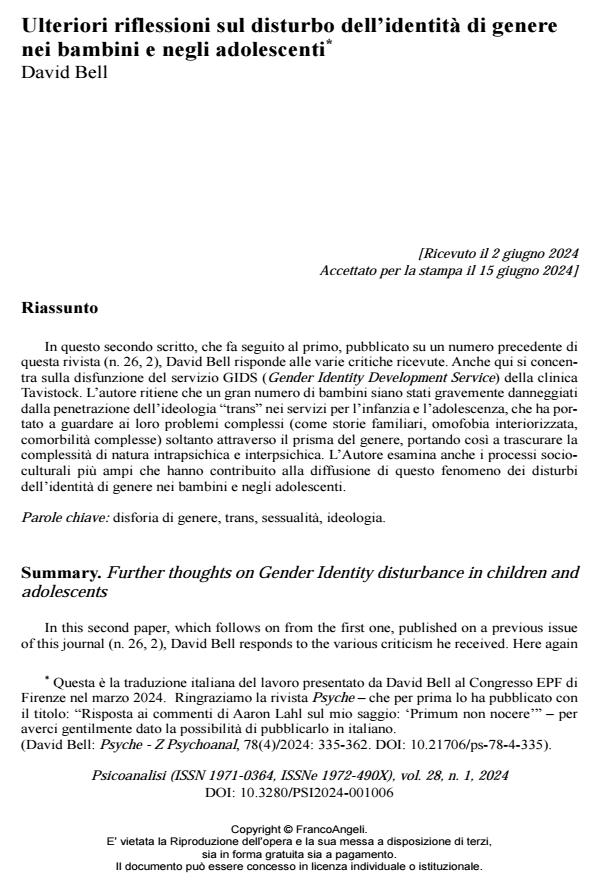Ulteriori riflessioni sul disturbo dell’identità di genere nei bambini e negli adolescenti
Titolo Rivista PSICOANALISI
Autori/Curatori David Bell
Anno di pubblicazione 2024 Fascicolo 2024/1
Lingua Italiano Numero pagine 18 P. 73-90 Dimensione file 276 KB
DOI 10.3280/PSI2024-001006
Il DOI è il codice a barre della proprietà intellettuale: per saperne di più
clicca qui
Qui sotto puoi vedere in anteprima la prima pagina di questo articolo.
Se questo articolo ti interessa, lo puoi acquistare (e scaricare in formato pdf) seguendo le facili indicazioni per acquistare il download credit. Acquista Download Credits per scaricare questo Articolo in formato PDF

FrancoAngeli è membro della Publishers International Linking Association, Inc (PILA)associazione indipendente e non profit per facilitare (attraverso i servizi tecnologici implementati da CrossRef.org) l’accesso degli studiosi ai contenuti digitali nelle pubblicazioni professionali e scientifiche
In questo secondo scritto, che fa seguito al primo, pubblicato su un numero precedente di questa rivista (n. 26, 2), David Bell risponde alle varie critiche ricevute. Anche qui si concentra sulla disfunzione del servizio GIDS (Gender Identity Development Ser-vice) della clinica Tavistock. L’autore ritiene che un gran numero di bambini siano stati gravemente danneggiati dalla penetrazione dell’ideologia “trans” nei servizi per l’infanzia e l’adolescenza, che ha portato a guardare ai loro problemi complessi (come storie familiari, omofobia interiorizzata, comorbilità complesse) soltanto attraverso il pri-sma del genere, portando così a trascurare la complessità di natura intrapsichica e interpsichica. L’Autore esamina anche i processi socioculturali più ampi che hanno contribui-to alla diffusione di questo fenomeno dei disturbi dell’identità di genere nei bambini e negli adolescenti.
Parole chiave:disforia di genere, trans, sessualità, ideologia.
David Bell, Ulteriori riflessioni sul disturbo dell’identità di genere nei bambini e negli adolescenti in "PSICOANALISI" 1/2024, pp 73-90, DOI: 10.3280/PSI2024-001006